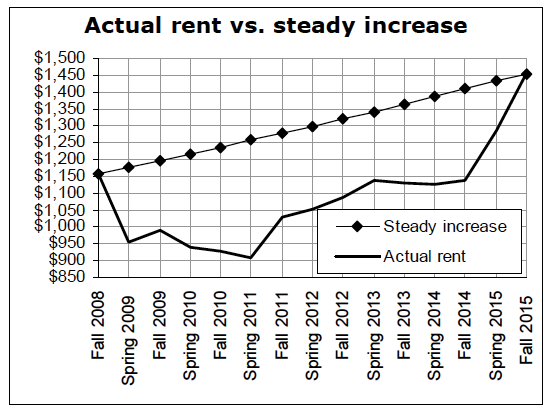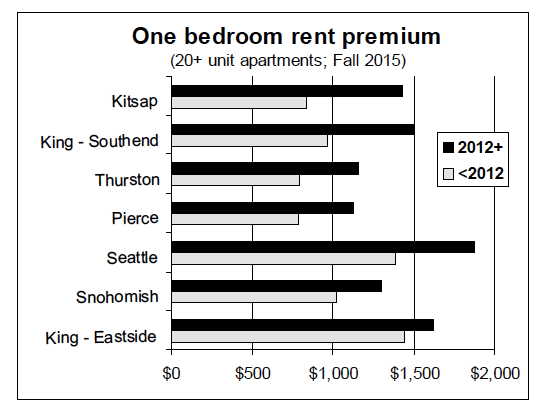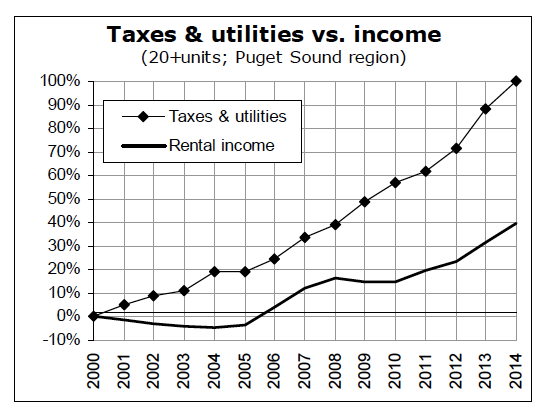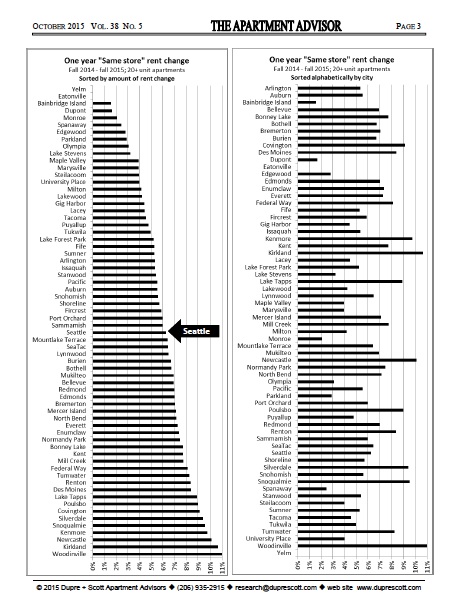Panel: The Future of Innovation in Seattle
What happens when a neighborhood like Pioneer Square or South Like Union turns into a thriving center for tech? How, exactly, does that happen? Knowing that we are growing, what kind of community do we want to become? And frankly, what does technology and innovation have to do with making Seattle a great place to live and work for everyone—healthy, inclusive, creative, productive, and affordable? Are Seattle’s cranes going to truly foster a better—not just bigger—Seattle? Join us to explore what changes to the built environment mean for the future of innovation in our city.
On Monday, October 26th, we will explore the role of the Innovation District model–urban areas that are easily accessible by transit, technologically plugged-in, and populated by public institutions, startups, and other innovators–in shaping Seattle’s future. This event is getting a lot of attention from Seattle’s startup crowd already, making it a great opportunity to network over (hosted) food and drinks with some of Seattle’s future business leaders. But the conversations won’t be complete without you there in attendance.
As suburban office parks fall out of favor, more and more of these collaborative innovation clusters are appearing all over the globe. Major hubs like London, Boston, New York, and San Francisco have led the way, and Barcelona, Detroit, and even Seattle are making names for themselves with exciting examples as well. These significant, rapid changes to the built environment generate positive results for economic growth but mixed results for communities, leading to combative, sometimes violent, responses from those left behind.
Moderated by the founding director of Urban@UW, Thaisa Way, our panel of top thinkers and innovators will explore how Seattle can forge a new, more inclusive approach to urban innovation that empowers startups, established companies, and residents alike. Join us on Monday, October 26th from 4:00 to 6:00 pm at Galvanize, the newest incubator in Pioneer Square.
Panelists:
- Roger Valdez, EXECUTIVE DIRECTOR OF SMART GROWTH SEATTLE!
- Rebecca Lovell, City of Seattle’s Director of Entrepreneurship and Innovation
- Frank Martinez, co-founder of StartupCoin Ventures LLC
- Ruby Love, Chief Impact Officer at Venture Scale
- David Harris, Cultural Entrepreneur at Hack the CD
- [Moderator] Thaisa Way, founding director of Urban@UW
Sponsors:
Rent Hyperbole Reaches Portland; Will They Make Seattle’s Mistakes?
Good news and bad news out of Portland; the bad news is that media hype around skyrocketing rents is moving right along just like it is in Seattle. The good news is that Portland is putting its attention on an incentive based, tax exemption program, borrowed by Seattle, to create more affordable units. Here’s the first two paragraphs of a front page story in Saturday’s Oregonian:
As thousands of Portlanders struggle with skyrocketing rents, the city has failed this year to convince a single real estate developer to tap into a city fund meant to encourage more affordable apartments.
Even as Mayor Charlie Hales proclaims a housing emergency, one of the city’s key tools for affordable housing has gone virtually dormant.
There it is. “Skyrocketing rents!” The term is thrown out there, as it often is in Seattle, without any substantive definition of what warrants use of the term or what it even means. In Seattle, a closer look at the numbers shows that rents change, and when they go up it might feel like a skyrocket when rents previously lowered by a down economy rise with flat supply and increasing demand. The story, however, is really about Portland’s version of the Multifamily Tax Exemption (MFTE) program, a program that Portland had first.
Three years ago, city and county officials put so many new restrictions on the fund that chased away developers and killed any chance the program had to make a dent in Portland’s shortage of affordable housing.
The city has since reversed course, but the program that gives property tax cuts to developers in return for affordable apartments remains a tough sell: Zero deals in 2015, even as a blitz of new apartment construction changes the city’s skyline.
Notwithstanding the pointless hyperbole, the good news is that some in Portland seems to understand the relationship between larding up an incentive program with too many rules so that it isn’t an incentive anymore. The Seattle City Council has a stubborn streak, wishfully imposing changes to the MFTE program to mandate lower levels of Area Median Income (AMI), a higher percentage of set aside for rent restricted units (from 20 to 25 percent) and infeasible two and three bedroom requirements.
But we can also see Portland following the disastrous “incentive zoning” script played out in Seattle over the last decade. In an opinion piece in the same paper, the editorial board validates bad thinking :
It remains to be seen how the proposal will be structured. The current incentive involves granting developers up to an additional floor area ratio of 3 to 1 for adding affordable housing, according to Joe Zehnder, the chief planner for the city’s Bureau of Planning and Sustainability. They’re also grappling with where to set the price per square foot that developers would have to pay in lieu of providing affordable housing if they want the extra square footage.
“Just like anything, we should get good value for what we’re giving up,” said Zehnder.
Dupre + Scott: Why Rent Increases Feel Like a Ride on a Skyrocket
I can’t resist another post based on the latest Apartment Advisor Newsletter from Dupre + Scott. One of the great services Dupre + Scott has done over the last few years of the housing discussion in Seattle is to temper the heated rhetoric about “skyrocketing” rents by trying to inject some data and facts into the discussion. In one example from the newsletter, Dupre + Scott looks at one building’s rents over the last 7 years. What happens is interesting and instructive about why the anecdotal evidence is so striking. In this building rents rose over 6 years by over $300, and most of that came in the last year, an increase of about 28 percent. That definitely feels like a skyrocket.
The actual increase over the time period does look pretty steep. But you can see that the rents went down and then started a slow rise back up until most of the ground lost since 2008 was made up.
Yes, a 28% increase hurts. Especially when it happens in one year. After all, it was a $316 a month increase. That will strain anyone’s budget if they weren’t prepared for it. But that’s the only side of the story we hear about in the media. Once again, take a step back and look at the bigger picture. Even after the large increase in the past year, rents increased just 3.3% a year over the past seven years. Well that’s just too boring for a headline, isn’t it?
So even though in the big picture rents didn’t “skyrocket” most of the increase came all at once. But one thing to remember is that over the whole span, renters experienced some serious savings on costs, real money they could use for other things for that time period. How much did renters save in this building?
They each enjoyed $19,205 of lower rents over the past seven years compared to paying a 3.3% increases each year. That’s a $19,205 windfall for each resident, even after a 28% rent increase in the past year. That $19,205 savings will cover the $316 a month rent increase for the next five years.
I’m sure that a person living in this building the whole time wouldn’t be all that consoled by seeing that they saved almost $20,000 since the rent started going down. But maybe their income increased along with the recovery in the economy. Maybe it didn’t. Maybe the person got married or divorced and experienced an over all change in household income. Maybe the person absorbed the increase with no trouble. Maybe the increase forced them to find another place to live. All these factors contribute to how the rent increase feels and how it is perceived by policy makers.
The example shows that while broadly we don’t have a crisis, a 28 percent increase in one year makes a great story for the media that validates that the perception that we do have one. Until we get smarter about how we consider what’s happening in the market and individuals in that market, the housing discussion is going to continue to be like trying to read a book with a microscope. We need to find a better measure of when a person needs help (like the residual income model) and better measures of the whole market. Until we put work into that, we’re going to keep getting skyrocketing rhetoric rather than solutions to real people’s problems.
We’re #32!: Seattle Data Doesn’t Warrant Rent Panic
I pointed out yesterday in my post about the Seattle Way that here in Seattle we haven’t been very smart about housing policy. That’s mostly because we rely on data that has no relationship to the housing market place or the way people actually build, finance, and buy housing products. If we look at data that is used by people who invest money in housing, especially data gathered from the Dupre + Scott Apartment Survey, we’d see a far different version of reality that the one being promulgated by the media and members of the City Council. In the real world, rents go up and down over time, and in real Seattle’s housing market, prices haven’t been skyrocketing. Furthermore, Seattle is right in the middle of rent increases compared to 60 other cities in our region.
First, Dupre + Scott reiterate in their latest newsletter what they said in a previous post on “skyrocketing” rents:
We’ll tell you that rents didn’t really increase that much. At least not “increase” in the way that is being bantered about today.
Part of the reason rents aren’t going up as fast as it may seem is attributable to what Dupre + Scott calls the “skew of the new,”
New units rent for more because… well, because they are brand new. And they typically have more amenities than older properties. The One bedroom rent premium chart below shows that’s true all around the region. Region-wide, apartments built after 2011 rent for a 54% premium compared to properties built before 2012.
When we remove new construction from the calculation of the rate of increase is about 6.2 percent compared to 8.4 percent with new construction included.
The latest numbers from the Dupre + Scott survey also continue to validate a fact and an going trend in Seattle as well, that while rents are cyclical over time, expenses generally aren’t and they’ve been increasing at a faster rate than rental incomes have.
Both of these are very satisfying pieces of data for those of us who believe that City Councilmembers and others in the community are using bad data and individual stories of hardship to fan anti-growth and anti-development fears among people in the community. Yes, rents have been increasing over time, but not any faster than they have in the past when rents go up. Then, after a period rents go down. Rents change. But expenses to operate housing steadily track up.
But there’s more. How do we deal with the problem of new construction and renovation which, when factored in with prices for all housing, increase the rate of increase. That is, if some housing products go up in price because they are fixed up or are new, how can we compare apples to apples. We can’t compare an older, down rent unit to a brand new one that didn’t exist before. And it doesn’t make sense to say that prices are skyrocketing if only a portion of the market is producing more expensive units. You wouldn’t say the average price of your groceries is $1000 if what was in your cart was saltines, peanut butter, and caviar.
Fortunately, there’s an easy solution. All you have to do is look at how much rent changed in the same properties over the past year. That will eliminate distortion from new units that came into the market in between the two surveys. This “same store” analysis is the real measure of rent change.
Here’s the really fantastic chart showing “same store” analysis for Seattle compared to other cities in the Puget Sound:
Out of 66 cities in the region Seattle’s rent increases over the 12 month period were the 32nd highest with increase of 6.2 percent. Bellevue, Redmond, and Kent all had increases greater than Seattle’s in the same period.
All of this data isn’t to say that the rent increases in Seattle have not been significant. Dupre + Scott uses that term over and over again. The question is are rents “skyrocketing?” Their answer is that they aren’t if “skyrocketing” means dramatic and uncharacteristic increases given all the other factors. The truth is, as we always repeat ad nausea is that rents go up and down based largely on supply and demand. There is nowhere to hide for the people pushing bad policy when we look at the facts; if rents are really “skyrocketing” the answer is more housing, if they aren’t then we need to calm down and decide how we keep ahead of demand with more supply so they don’t.
But, as Dupre + Scott points out, doesn’t make a very interesting headline, does it?
O’Brien, Sawant Grandstand While Apartment Owner Fixes Problems
It’s a pretty simple story. A new owner buys a building that has run down from an owner who used the deferred maintenance as a subsidy for lower rents. Often the buildings are so run down they don’t meet City standards for heal the and safety. So the new owner has to make repairs and the only way to pay for those is a rent increase. The headline here should be, “New Owner Buys Old, Run Down Building and Will Fix it Up.” But this is Seattle and it’s an election year.
Instead of offering help to tenants the new owner of 6511 Rainier Councilmembers O’Brien and Sawnant will protest in front of the new owners offices this morning in a totally pointless gesture to score some political points. The truth is that the owner, Columbia City Condos,” is doing the right thing. But you wouldn’t know that if you listened the noise coming out of City Hall.
Sadly, no help has been offered to help tenants and nothing has been offers to help make the repairs. They’ll be done by the owners and the residents will get a month’s free rent. That’s what’s really happening. But in the fantasy world at City Hall, the problems of tenants are being caused by the new owner trying to make improvements.
What Councilmember’s Sawant and O’Brien and Sawant should be proposing in the upcoming budget discussions is a fund to help the new owners make the repairs and pass the savings on to the tenants. Otherwise the new owner has no choice but to increase the rents to help cover necessary costs.
Deferred maintenance often creates more affordable units, but new owners who have to raise rents to make improvements are doing it out of necessity to make the buildings habitable. The City, if it wants to help keep rents low in buildings sold with deferred maintenance needs a program to help with needed repairs.
Here’s the statement sent out of the press ahead of the protest:
Statement from Carl Haglund of Columbia City Condos on his desire to fix up the old building he recently purchased at 6511 Rainier Ave.
“We sincerely apologize for the condition of the building that our company recently purchased. The company’s intent, ever since buying the building two months ago, is to make this a desirable place to live.
But some of the units are in a worse state of repair than we understood. Even though Columbia City Condos didn’t let the building deteriorate, we take full responsibility moving forward as the new owners.
We have decided to give the current tenants free rent during the month of October. This should give them some time and money, should they understandably decide to relocate.
A slumlord would continue to rent these really cheap apartments in their current condition, whether or not they need repairs. I want to make it clear this is not who I am, nor is this how Columbia City Condos operates. We are in the business of providing safe housing at market rents.
I recently purchased the building and was told prior to doing so that the building had passed the city’s own Rental Registration and Inspection Ordinance. But clearly that process is broken because I found when I took possession that multiple families were living in each of the units in conditions not suitable for Columbia City Condos. This is surprising now that I have seen the condition of the units. I was as shocked as anyone at the condition of the building after taking over.
Columbia City Condos is not kicking anyone out. We have to charge market rents, and our repairs will include exterior repairs as well.
We intend to keep this as workforce housing.
Most of these renters are very hard working people who are working night and day to send money back home. Many are larger families in the apartments.
We are going to do repairs to keep it clean comfortable workforce housing, and will try to accommodate larger groups so that it remains affordable when split among different adults.
Our intention is to take responsibility, and turn this around.”
Facts about 6511 Rainer
- The conditions were present when Columbia City Condos bought the property at the end of July of 2015. The new owner has only had possession of the property since then.
- Haglund was on out of the country during August, and is learning some details about this situation along with everyone else
- The prior owners rented out apartments for as little as $550 per month. This is not sustainable, and is obvious given the flagging condition of the units.
- Rents were raised with the required 60-day notice to 1,175 for 2-bedroom units and 900 for 1-bedroom units.
- Of 13 units that received 60 days notice – 10 tenants are choosing to stay since we allow very large groups of tenants to occupy the units and this works for those families
- As a part of the purchase agreement, the building was to pass the inspection that certified the building met the City’s housing standards.
- We were just as shocked as everyone else when we saw the condition of the building; the purchase of the property was finalized while we were out of the country for 5 weeks.
- Only 2 requests for work orders received from the time of the purchase until 10/1/15.
- We deeply apologize for the conditions at the building that we did not create; our team is working full time to resolve the conditions at the building.
- We will not implement the rent increases until the work to meet inspection is finished.
- Although the building repairs don’t meet the threshold for relocation assistance, we hope the free rent for a month gives the tenants some time.
- When new owners take over a building in this kind of disrepair it takes time to get it into better shape. The assertions being made by Councilmember Sawant are false and leave the impression that the conditions of the building have gone on under the current owner. That’s not true.
- It’s unfortunate the Councilmember Sawant is scoring political points instead of working to improve the conditions in rental units all over the city by advocating for resources to make improvements to meet the new standards without having to raise rents. She has made real attempt at seeking a solution with Columbia City Condos, and has instead decided to use it as political fodder for her grandstanding












